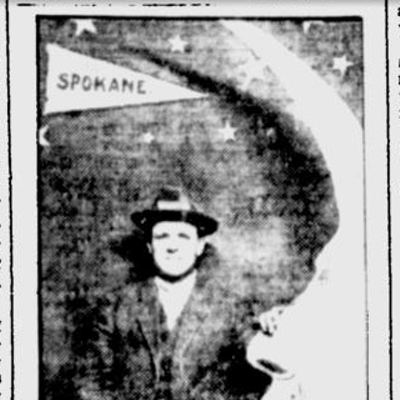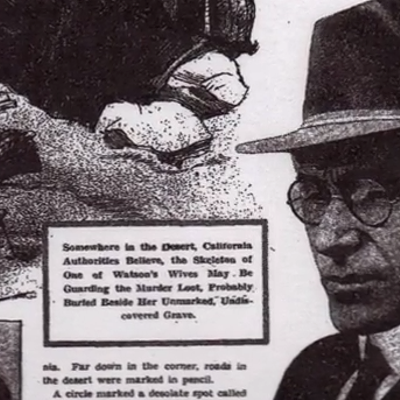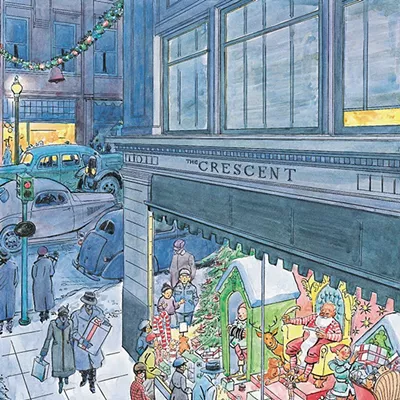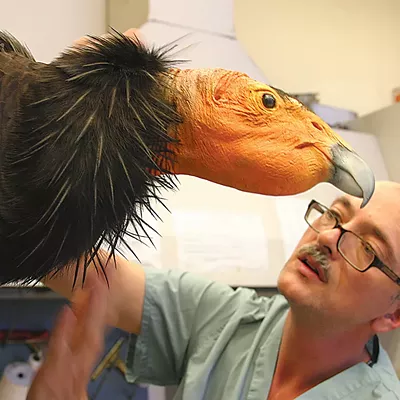In late June 1807, Northwest Company fur agent David Thompson led a party of 19 men, women, and children up the headwaters of the Saskatchewan River and across the Continental Divide. Their aim was to establish a trading post on the untapped Columbia River, but their journey was a difficult one. By the time they reached what is now called Howse Pass, the group had consumed all their dried pemmican, and Thompson was concerned that the hunters had found no big game available for food.
Provisions became scarce, and we had to kill a large Dog in good condition, and to make the most of him, he was singed, well scraped and washed, and hog like, boiled with the skin on.
One of the most trusted company voyageurs on the expedition was named Joseph Beaulieu, who Thompson described as both "a clever active man" and "a very hearty eater." When chowing down on the boiled dog, Thompson joked that "Beaulieu did eat his good share in large mouthfulls," but also noted that "the next morning he complained of a pricking pain in his stomach."
The party's descent down the west slope of the Rocky Mountains took over a week to accomplish. During that time, Beaulieu's symptoms grew into "a violent dry Colic & Pain under his Ribs," and by the time the furmen reached the Columbia River near modern Golden, British Columbia, the voyageur could no longer help with the necessary work. Thompson's duty as expedition leader was to see what he could do about Beaulieu's condition.
As usual I attended him he told me he had suffered much in the night, but was now more easy, and found the pain between the second and third lower ribs of the left side, I examined the place, and found the end of the black barb of a porcupine quill had just got through the skin, enlarging the place with a lancet, and applying a pair of pincers I drew it out; and the pain ceased.
Thompson was obviously fascinated by this emergency field operation, and in his daybook wrote an unusually long entry describing the details of that porcupine quill — its length and color; its origin as "one of the short thick ones on the Rump & Tail of the Porcupine;" and an odd hard sheath of flesh surrounding the quill that was as large as "the egg of a Pigeon." He presented a full diagnosis of the problem a few days later in his Report to the Northwest Company partners:
Our sick Man was now so far recovered as to begin to work he had it seems in eating swallowed the Quill of a Porcupine which had perforated the Intestines, till it made its appearance under the middle of the Ribs on the left Side from whence I extracted it two days ago.
In his autobiographical Travels in Western North America, written more than four decades after Beaulieu's operation, Thompson explored the context of the incident, discussing the natural history and behavior of porcupines before explaining "our foolish dogs" unfortunate habit of continually trying to bite the animals.
Their mouths are instantly full of quills, and in attempting to shut their mouths they press them deeper into the flesh; the Dogs with pain howl and roll themselves on the ground, we are obliged to tie a stick across the inside of the mouth; and thus get the quills out; but the Dogs often get quills in other parts of the body, if not soon taken out enter into the dog for the barbs of the quills are so formed, as by the action of the animal they work their way inwards.
Anyone who has owned a dog in this part of the world has had similar dealings with porcupines, and can nod their heads in assent at Thompson's observations. But could a porcupine quill really travel from its owner's rump to a dog, survive a boiling pot, be swallowed down a man's gullet and pass into his stomach, and then emerge from a spot between his second and third ribs on the left side?
Retired orthopedic surgeon and Thompson enthusiast Dr. Bill Brownlee believes it could. According to Brownlee, "The quill came through the guy's side about where you would expect it to. The stomach's on the left, just below the diaphragm. The dome of the stomach actually could extend to the level of the lower ribs and if it was full, I could see how the distance from the wall of the stomach to the rib cage could be quite short.
"There are a lot of stories in the medical literature of needles ending up in the heart wall, lungs, etc. I operated on a lump in a guy's foot once that we all thought for sure would be a malignant tumor, and when I cut into it, an almost whole round toothpick squirted out. It had been in there for 15 years or so when the guy thought back on it. ... Only recently had it become inflamed and more painful."
Radiologist Dr. Lyle Wendling of Spokane agrees with Dr. Brownlee, pointing out that some radiologists have taken biopsies of remote portions of the abdomen by carefully passing a 25-gauge needle through the stomach or small intestine wall without ill effects. "[Beaulieu's] fever reflects the fact that he did have an inflammatory response which apparently subsided once the quill was removed. A quill migrating through the diaphragm could have been extremely painful and been associated with other symptoms. Could 'dry colic' have referred to hiccups or a dry cough, either of which are a sign of diaphragmatic irritation?"
Wendling is right on the mark here — in 1800, a dry colic was associated with spasmodic or "severe paroxysmal griping pains in the belly, due to various affections to the bowels or other parts." Beaulieu had the symptoms, Thompson and his trusty pincers provided the cure, and the voyageur went on to serve in the Columbia country for years afterward.
In fact, Dragoon Creek in northern Spokane County appears on one of David Thompson's large maps as "Beaulieu's Rivulet." Joseph Beaulieu fathered at least three children in our region, presumably with a Salish woman. One of his daughters married another well-known fur trader named James Birnie, and several of their descendants, who know exactly who they are, live in the Pacific Northwest to this day.
Thanks to Carol Kershner, R.N., and Drs. Lyle Wendling and Bill Brownlee for their help on Beaulieu's affliction.


















